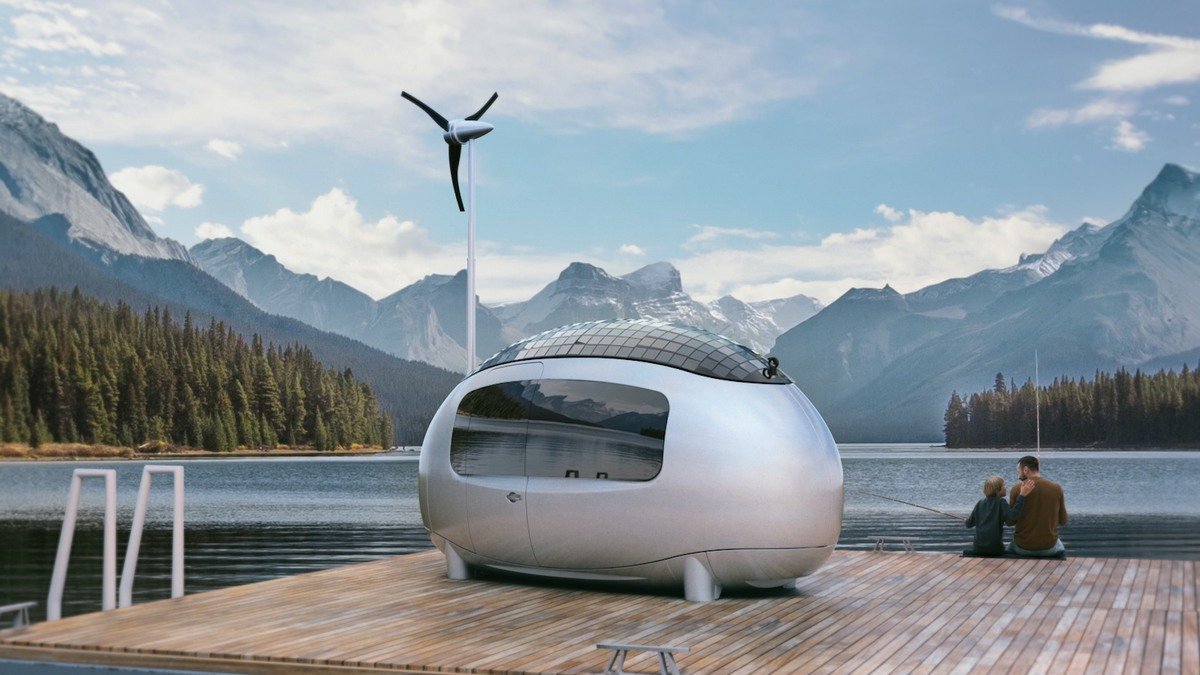Explore the Innovative Design of Hohabitats Modular Home for Modern Living
Effortless Homebuilding With Modern Modular Home Styles

Benefits of Modular Home Designs
Modular home styles supply numerous benefits that make them an attractive choice for lots of property owners. One of the primary advantages is cost-effectiveness. Due to the fact that modular homes are built in a manufacturing facility setting, building contractors can simplify the procedure, reducing labor and material costs, which typically converts to decrease costs for customers.
In addition, modular homes are understood for their rate of building and construction. pod homes. The controlled setting of a factory enables for efficient setting up, allowing homeowners to relocate right into their brand-new house much earlier than typical structure techniques would allow
Energy performance is another substantial benefit. Many modular homes are designed with energy-efficient systems and lasting products, resulting in reduced utility bills and a decreased ecological impact.
Furthermore, modular styles offer a high level of personalization. Property owners can usually select from various layouts, products, and surfaces, guaranteeing that their home meets individual preferences and way of living demands.
Lastly, modular homes are developed to meet rigorous building codes and requirements, ensuring sturdiness and security. Generally, the mix of price, speed, performance, high quality, and modification makes modular home layouts an appealing option for a vast array of customers.
The Modular Building Process
The modular building and construction process entails an organized method that substantially varies from traditional building methods. Each component is developed with the exact same products and requirements as a site-built home, consisting of insulation, electric wiring, and plumbing systems.
As the components are built, the site prep work can take place at the same time, consisting of foundation work and utility installments. This identical procedure considerably lowers the general timeline for conclusion. As soon as the modules are all set, they are moved to the building site, where they are craned right into setting and safely signed up with together.
The final stages involve ending up touches, such as outside siding, roof, and indoor detailing. This streamlined technique not just minimizes building waste yet also enhances energy effectiveness via well-coordinated structure practices. On the whole, the modular construction process provides a quicker, economical, and ecologically friendlier alternative to traditional home building.
Personalization Options Available
Discovering personalization alternatives in modular home designs enables property owners to tailor their living areas to their one-of-a-kind choices and way of livings. Among the most appealing elements of modular homes is the adaptability they use in style and design. Home owners can select from a range of layout, ranging from open-concept areas to more traditional formats, making certain that the home fits their certain needs.
Along with structural adjustments, personalization includes visual aspects. Property owners can select from a substantial palette of shades, materials, and coatings, including cabinetry, counter tops, flooring, and siding. This level of customization makes it possible for residents to produce a cohesive style that reflects their private design.
Furthermore, modular homes can integrate energy-efficient features and wise modern technology choices. Homeowners can choose solar panels, energy-efficient windows, and internet progressed heating and cooling systems, adding to both comfort and energy financial savings.
Last but not least, lots of producers provide the possibility wikipedia reference to include one-of-a-kind elements, such as built-in shelving, custom-made storage rooms, or outside space. This comprehensive series of customization choices makes certain that modular home styles can be as distinctive and functional as the families that inhabit them.
Sustainability in Modular Homes
Sustainability is a key factor to consider in modern home structure, and modular homes are increasingly designed with environmentally friendly practices in mind. These frameworks minimize waste via effective manufacturing processes, as components are fabricated in a regulated setting (pod homes). This not only decreases the amount of product disposed of throughout construction yet additionally decreases the carbon impact connected with typical structure techniques
Modular homes typically integrate sustainable products, such as redeemed wood, recycled metal, and low-VOC paints, which contribute to much healthier interior air high quality. Additionally, many layouts incorporate energy-efficient systems, consisting of solar panels, advanced insulation, and high-performance windows, which reduced energy usage and utility expenses over time.
The modular building and construction technique also permits better planning of energy use and source monitoring throughout the building lifecycle. By using prefabricated aspects, builders can substantially lower transportation emissions, as products are delivered in bulk to the site.
In enhancement, the versatility of modular homes permits future upgrades, making sure that property owners can change their living areas to include a lot more sustainable innovation as it comes to be available. Generally, sustainability in modular homes stands for a forward-thinking approach to eco liable living.
Cost-Effectiveness of Modular Structure
Modular homes not only focus on sustainability however additionally supply substantial cost-effectiveness contrasted to standard building methods - pod homes. Among the primary economic advantages is the reduction in labor costs. Since a considerable portion of the construction process happens in a regulated manufacturing facility environment, labor effectiveness is enhanced, causing lower overall expenditures
Additionally, making use of standard materials and designs lessens waste, leading to cost savings that can be passed on to consumers. The moment financial savings connected with modular building also add to its affordability; jobs can be finished in a portion of the time it considers conventional builds, permitting home owners to move in earlier and begin taking advantage of their financial investment.
Additionally, modular homes often integrate energy-efficient attributes, which can lead to lowered utility article costs in time, further enhancing their cost-effectiveness. Funding choices for modular homes are also coming to be a lot more favorable, with several loan providers acknowledging their value and security.
Final Thought
In conclusion, modern-day modular home designs provide a transformative strategy to homebuilding, defined by sustainability, effectiveness, and customization. Eventually, modular homes represent a forward-thinking remedy that addresses contemporary housing needs and advertises a much more sustainable future in property building and construction.
